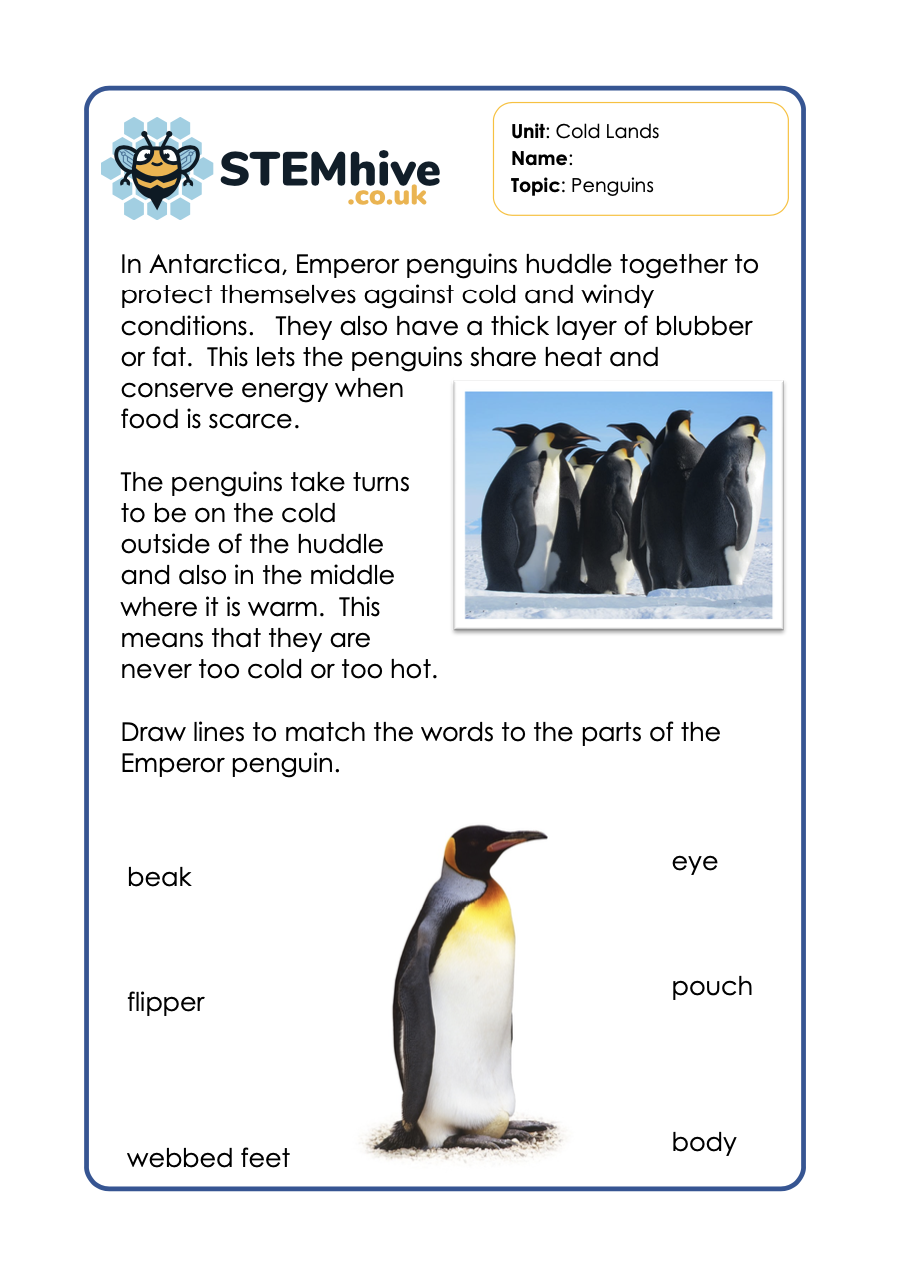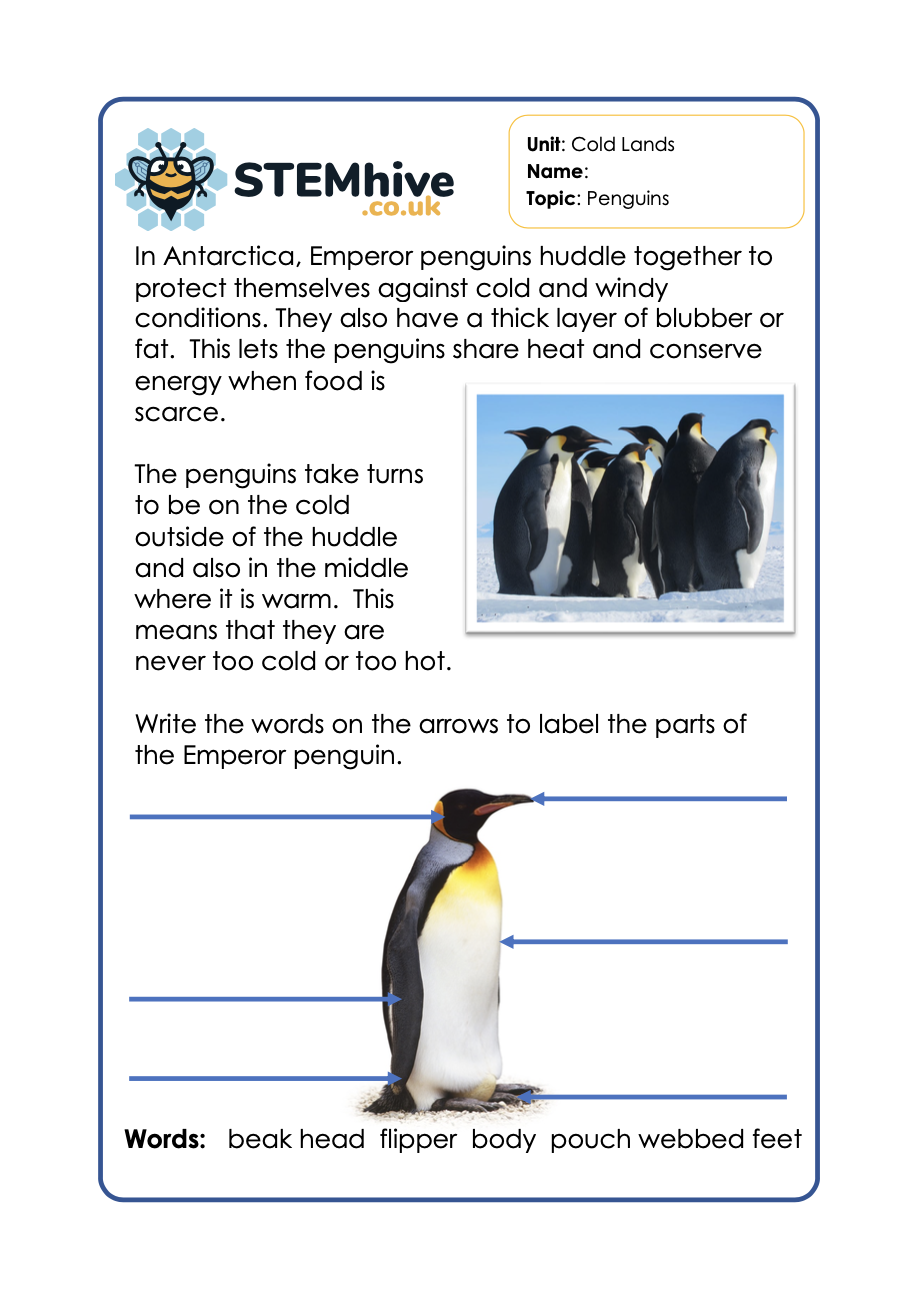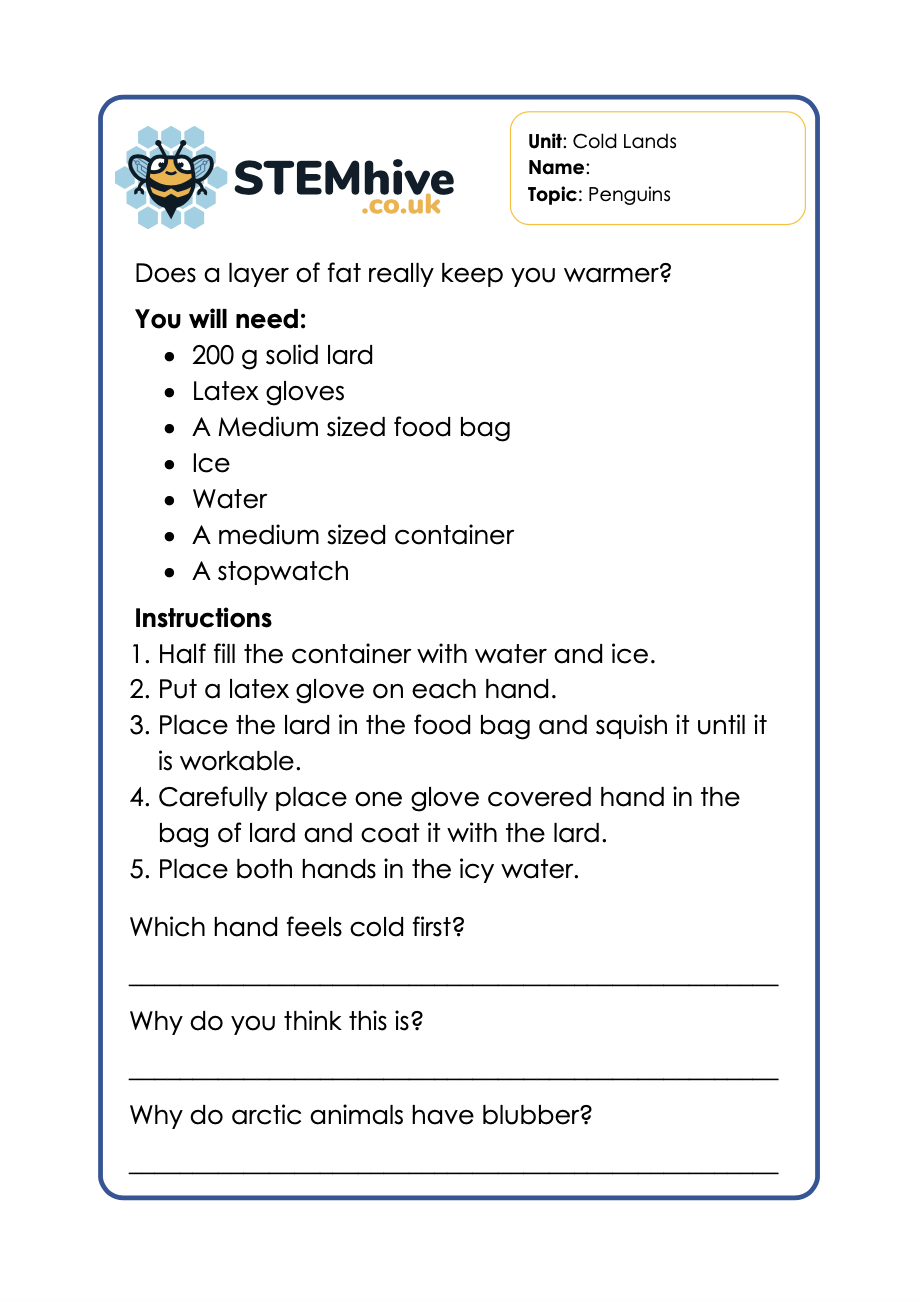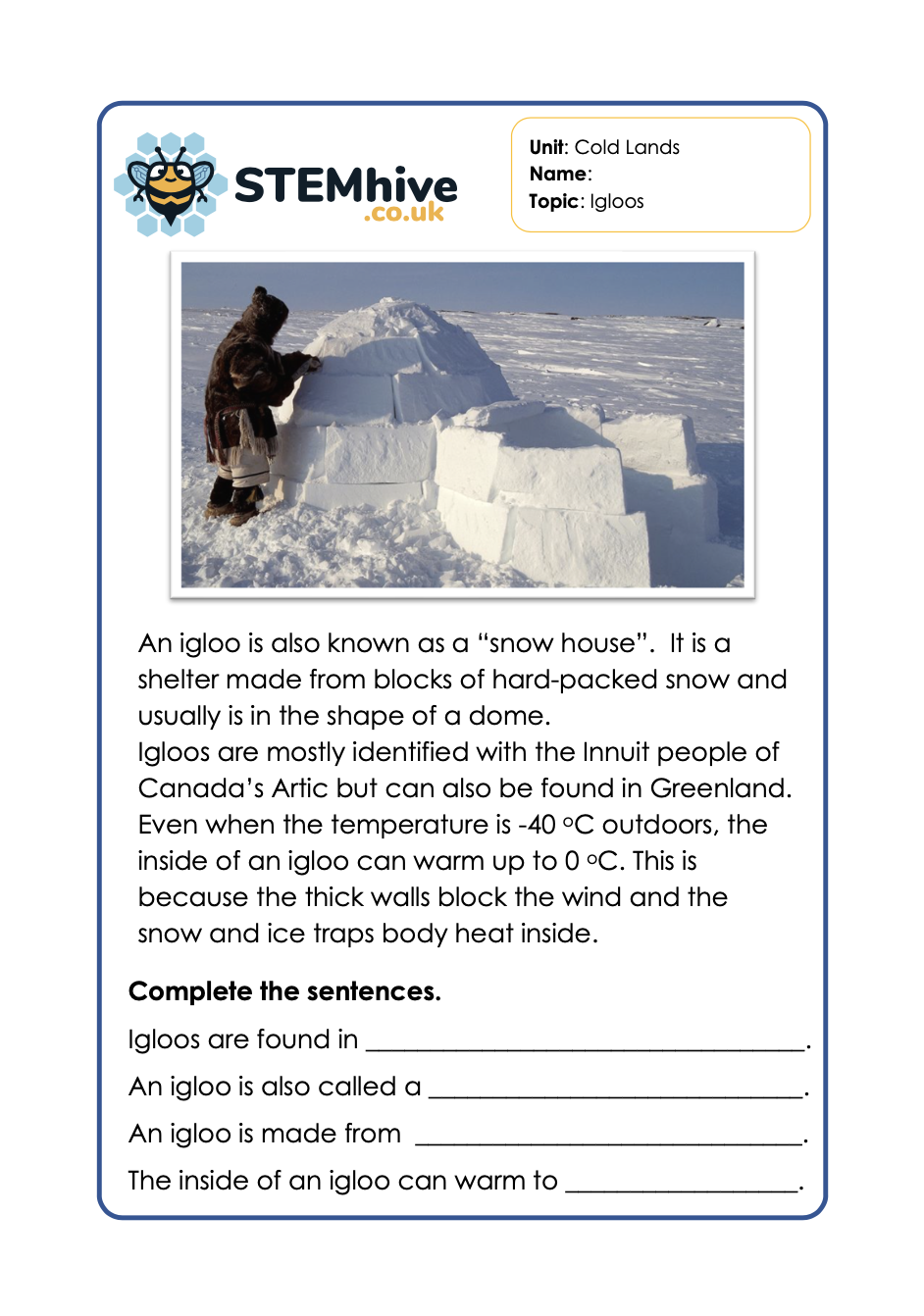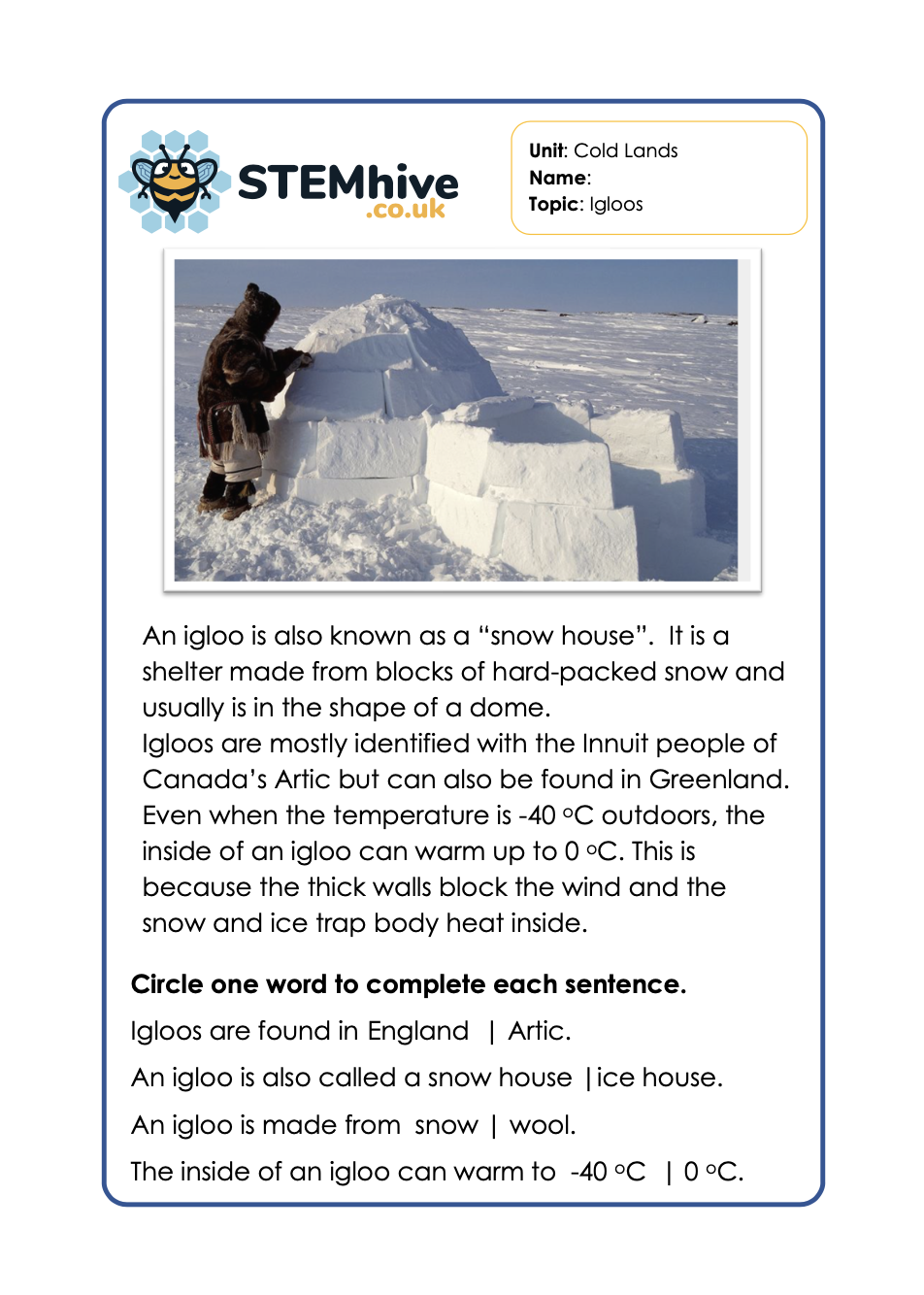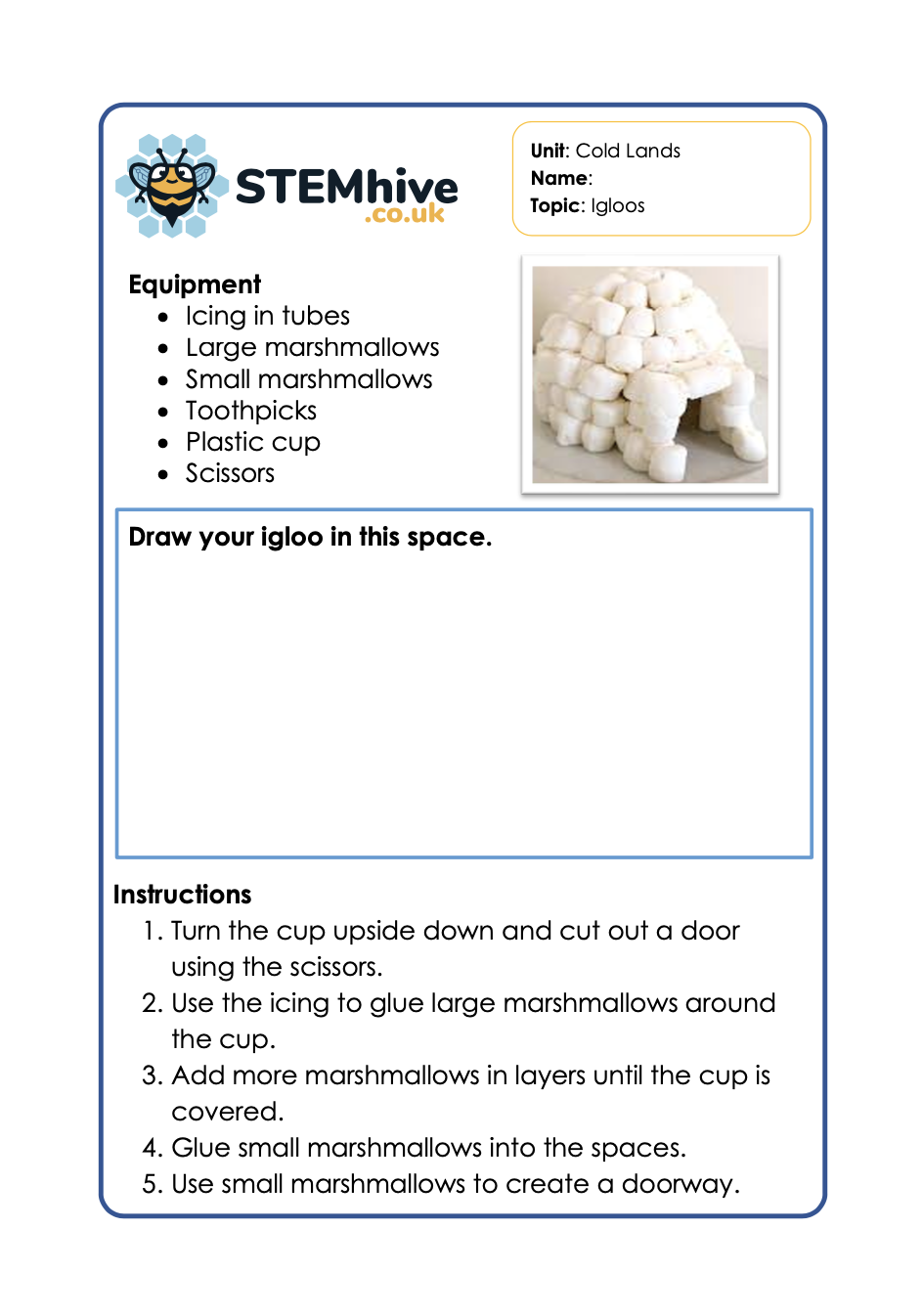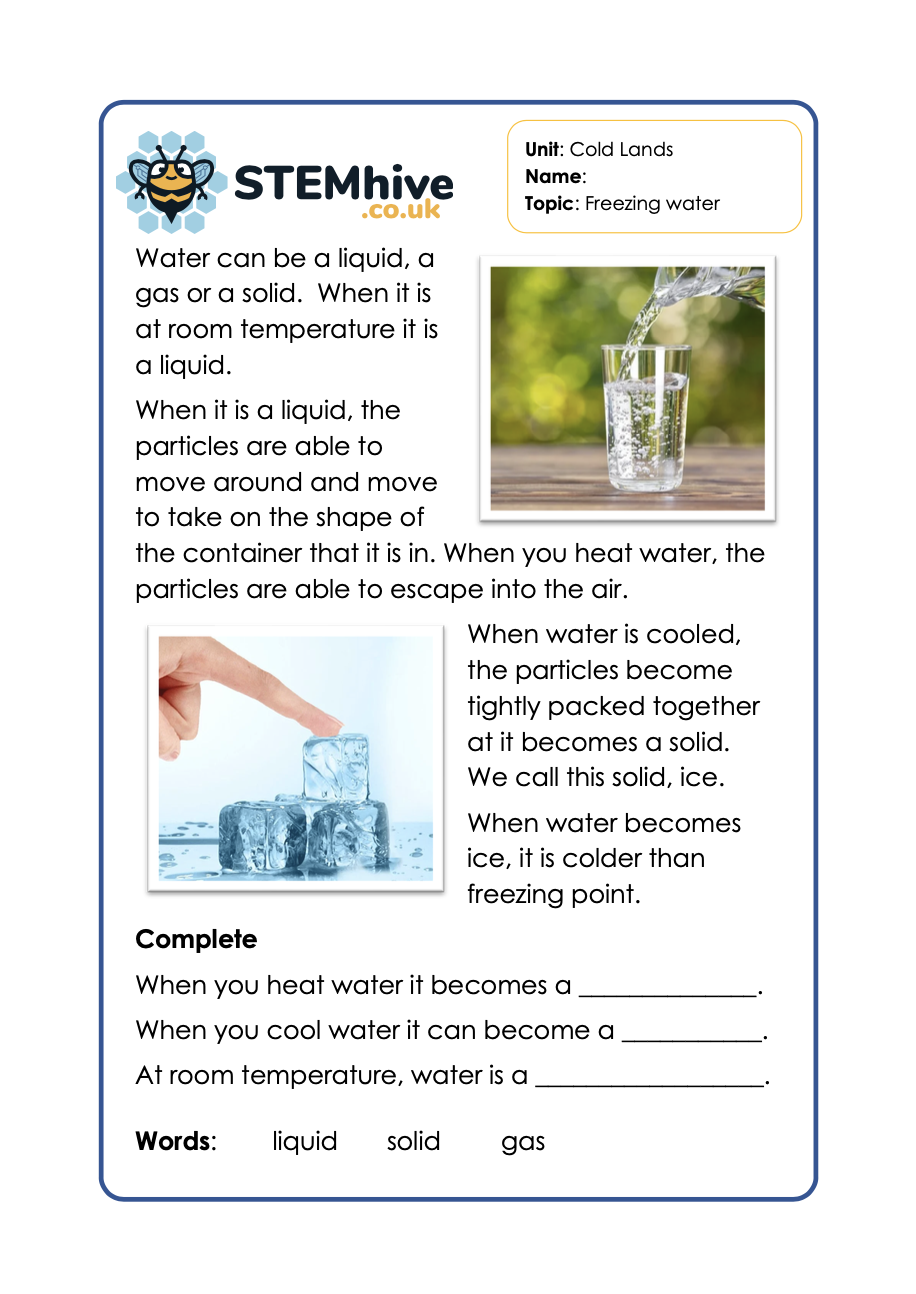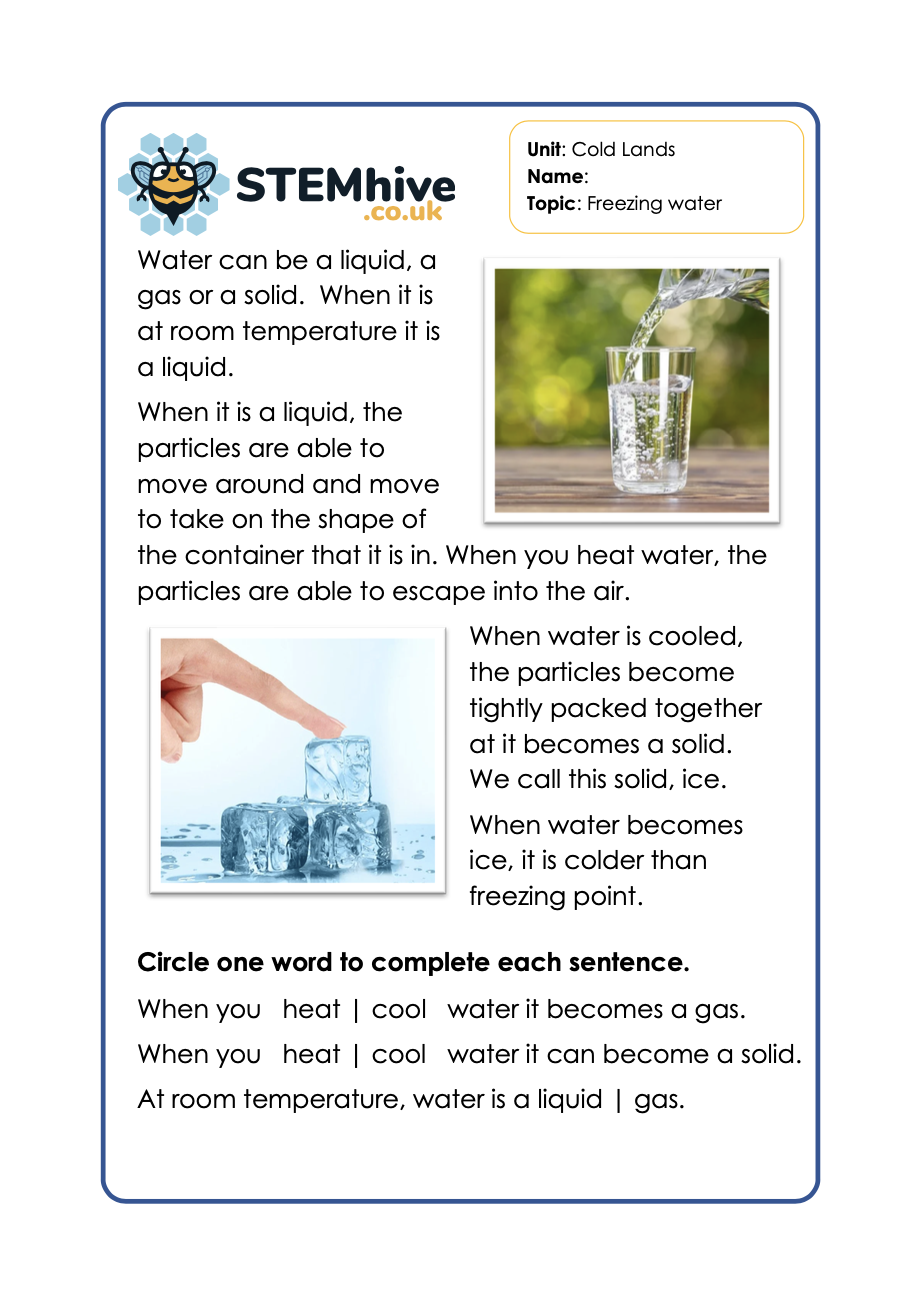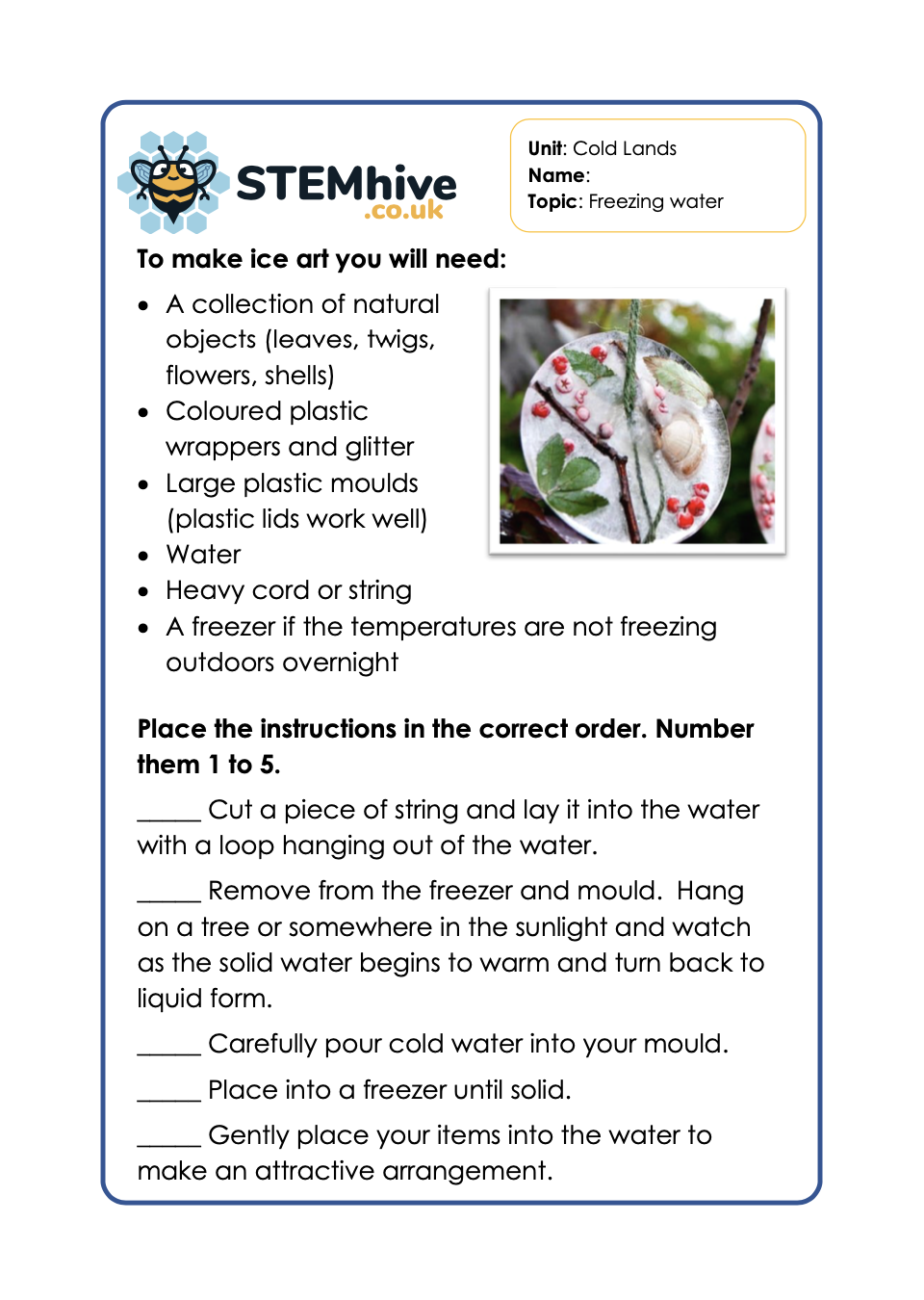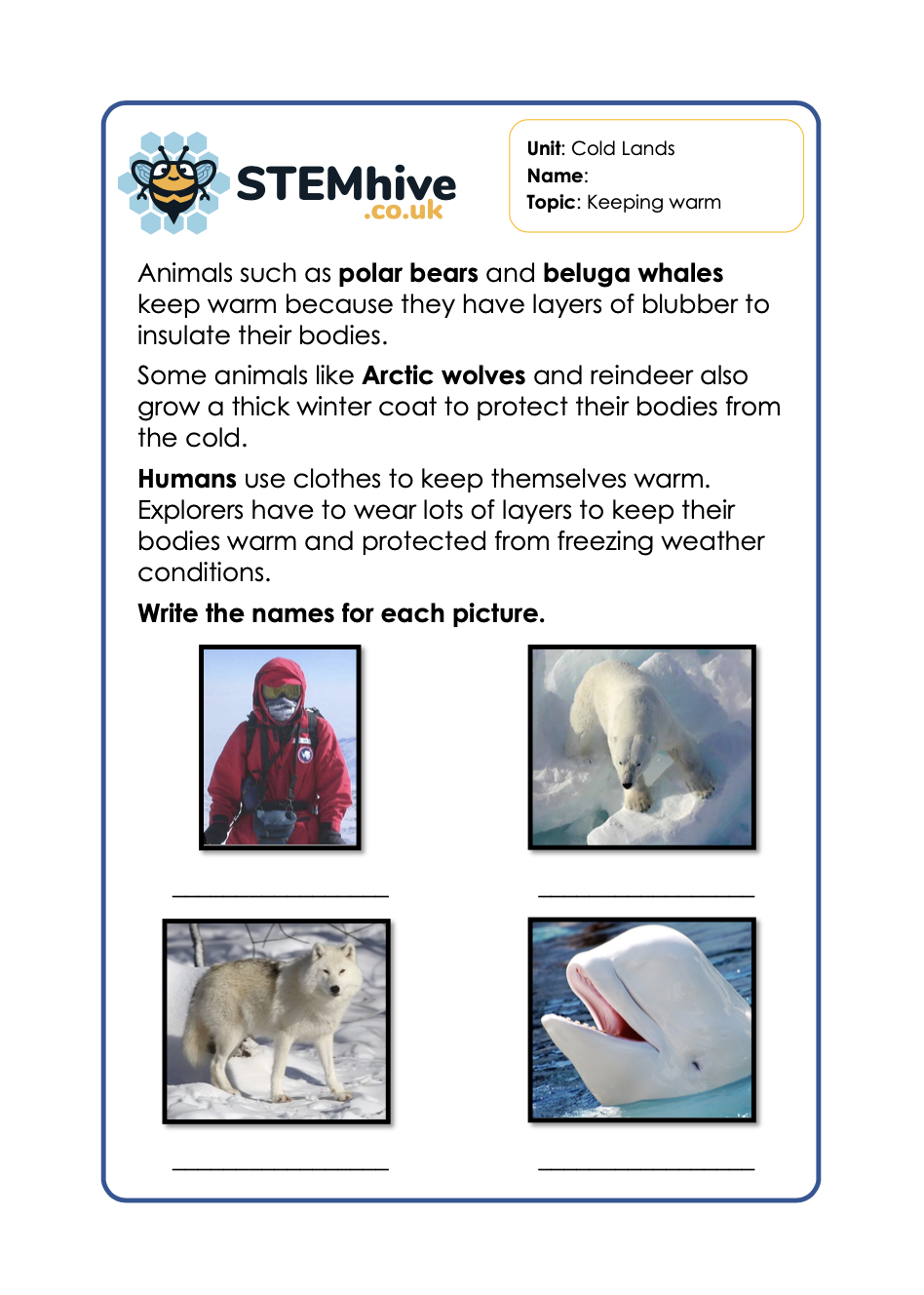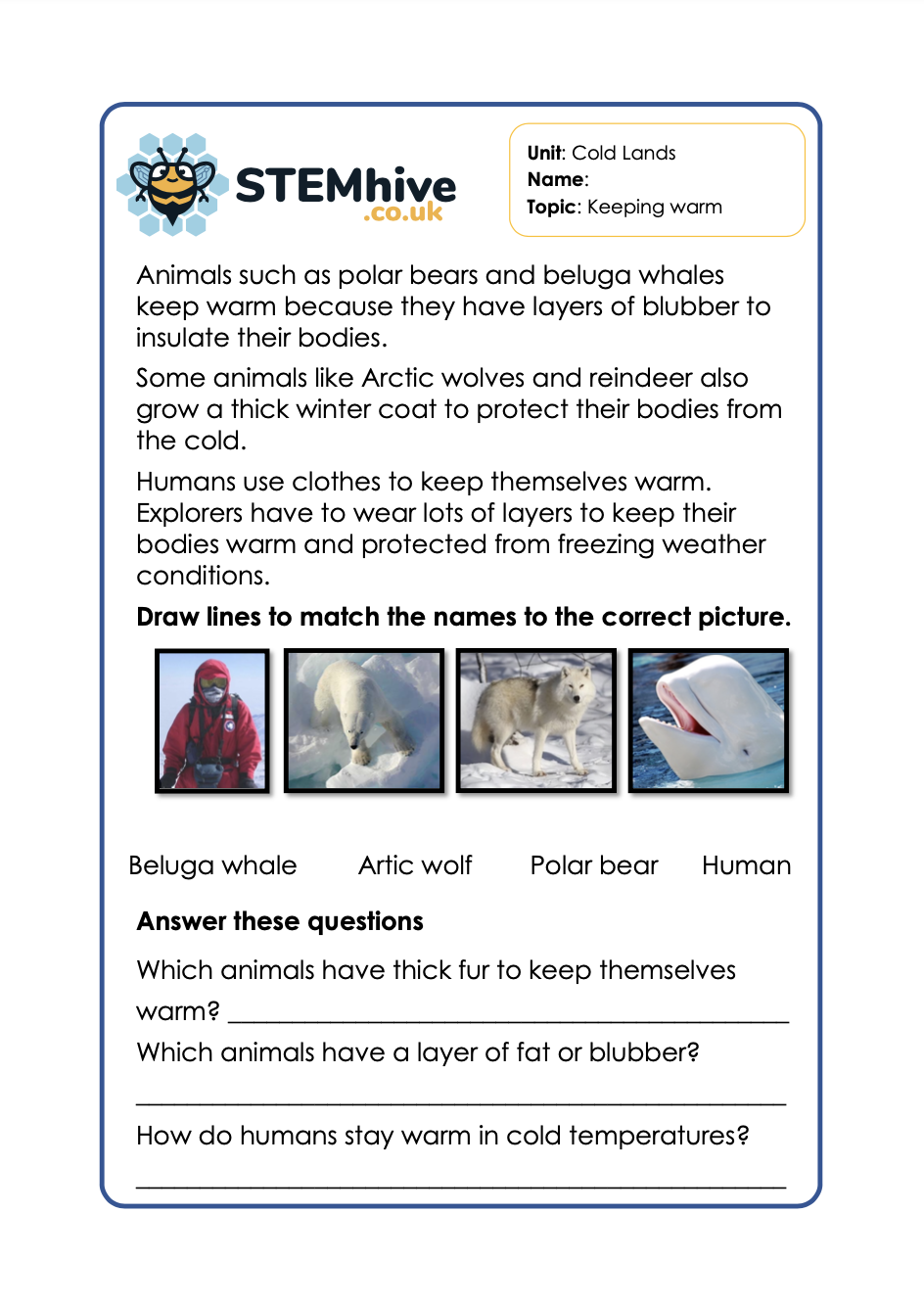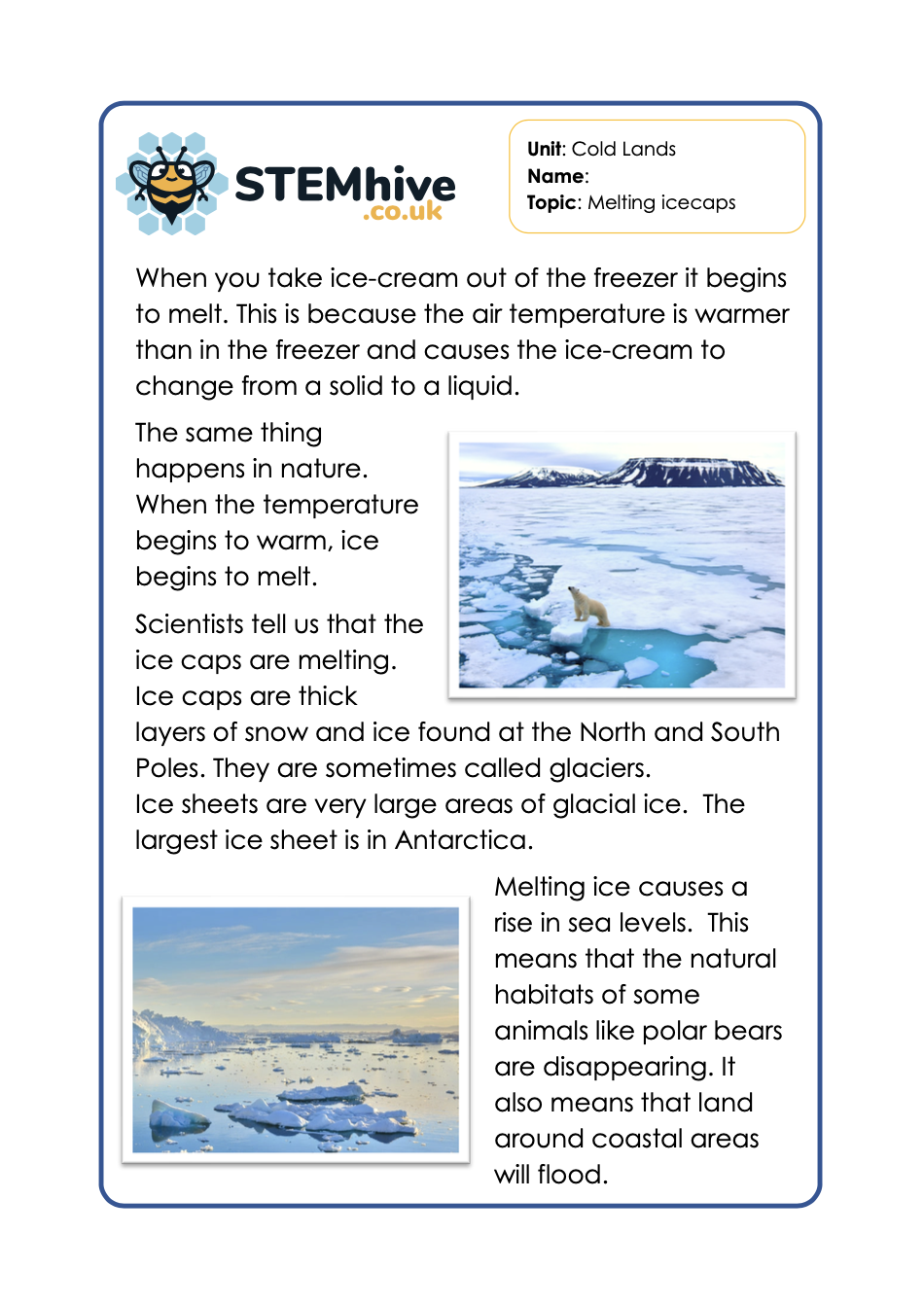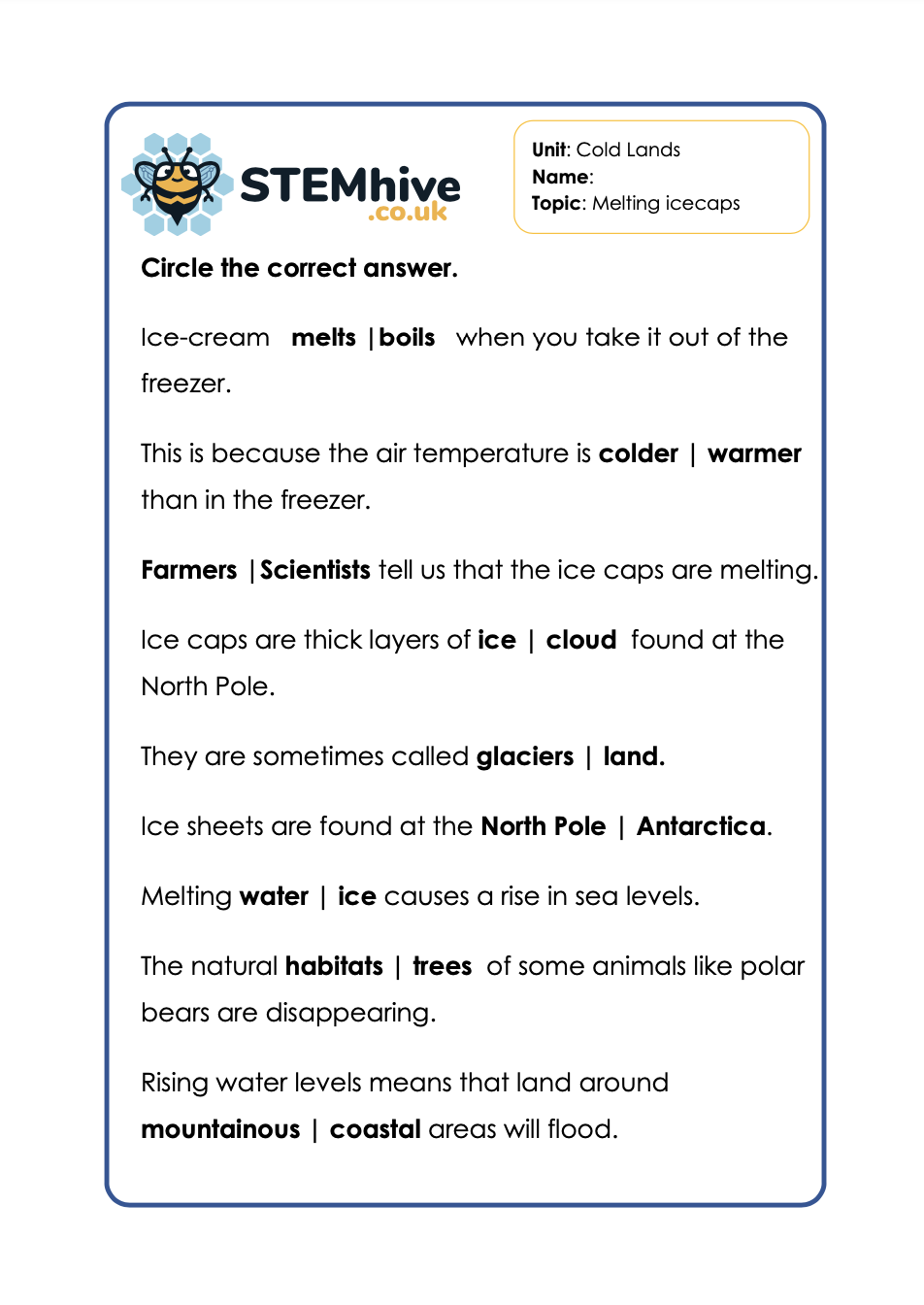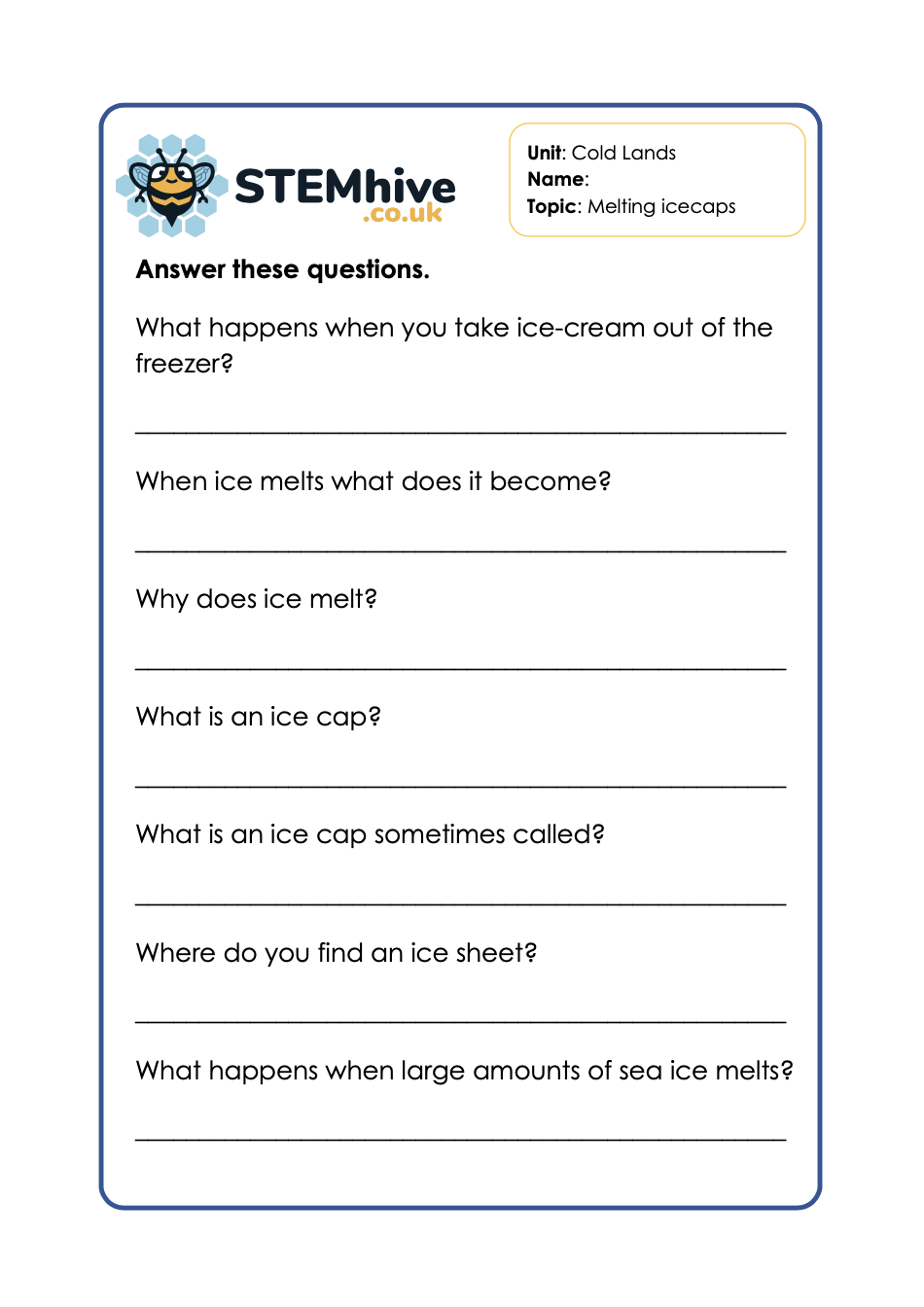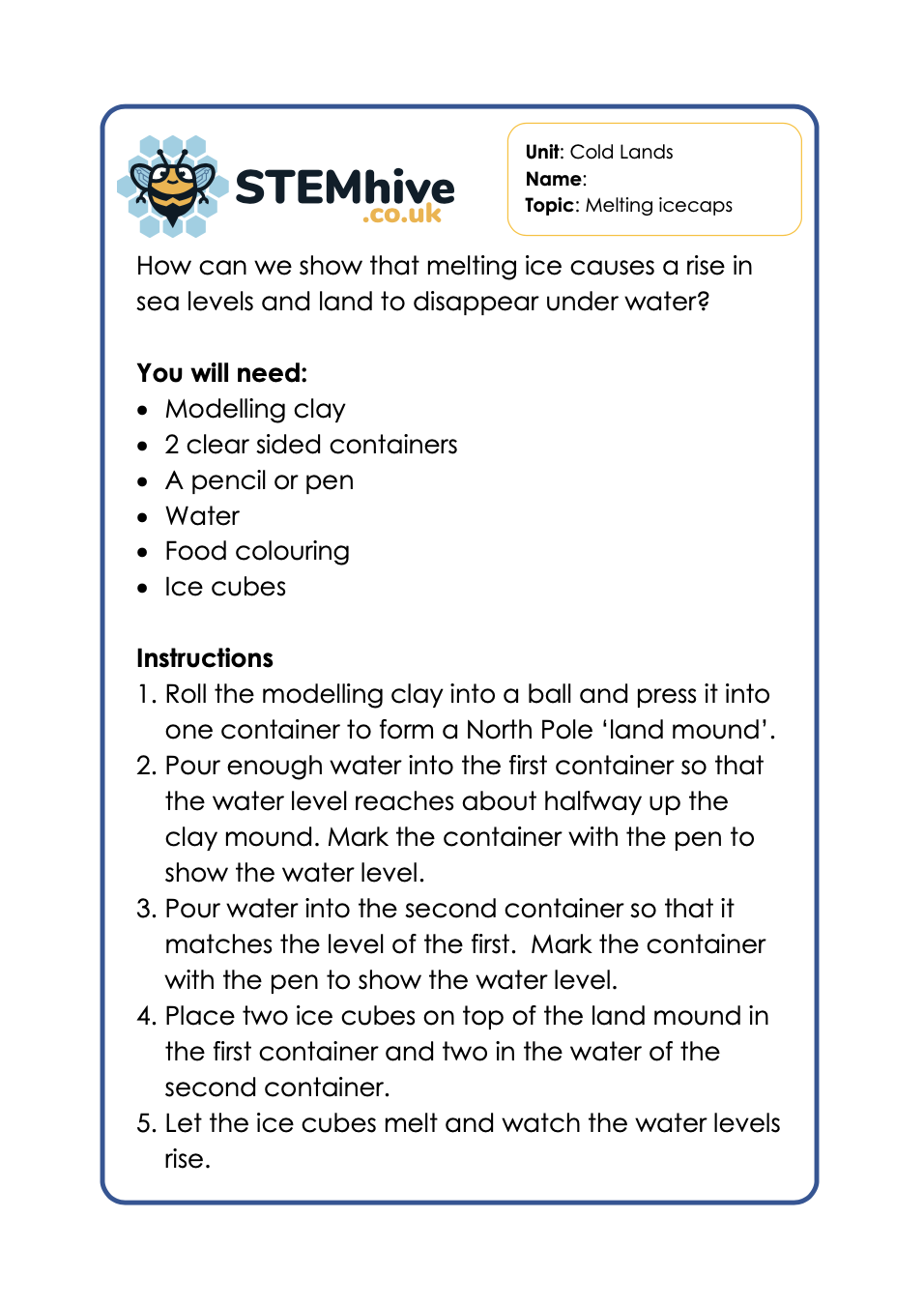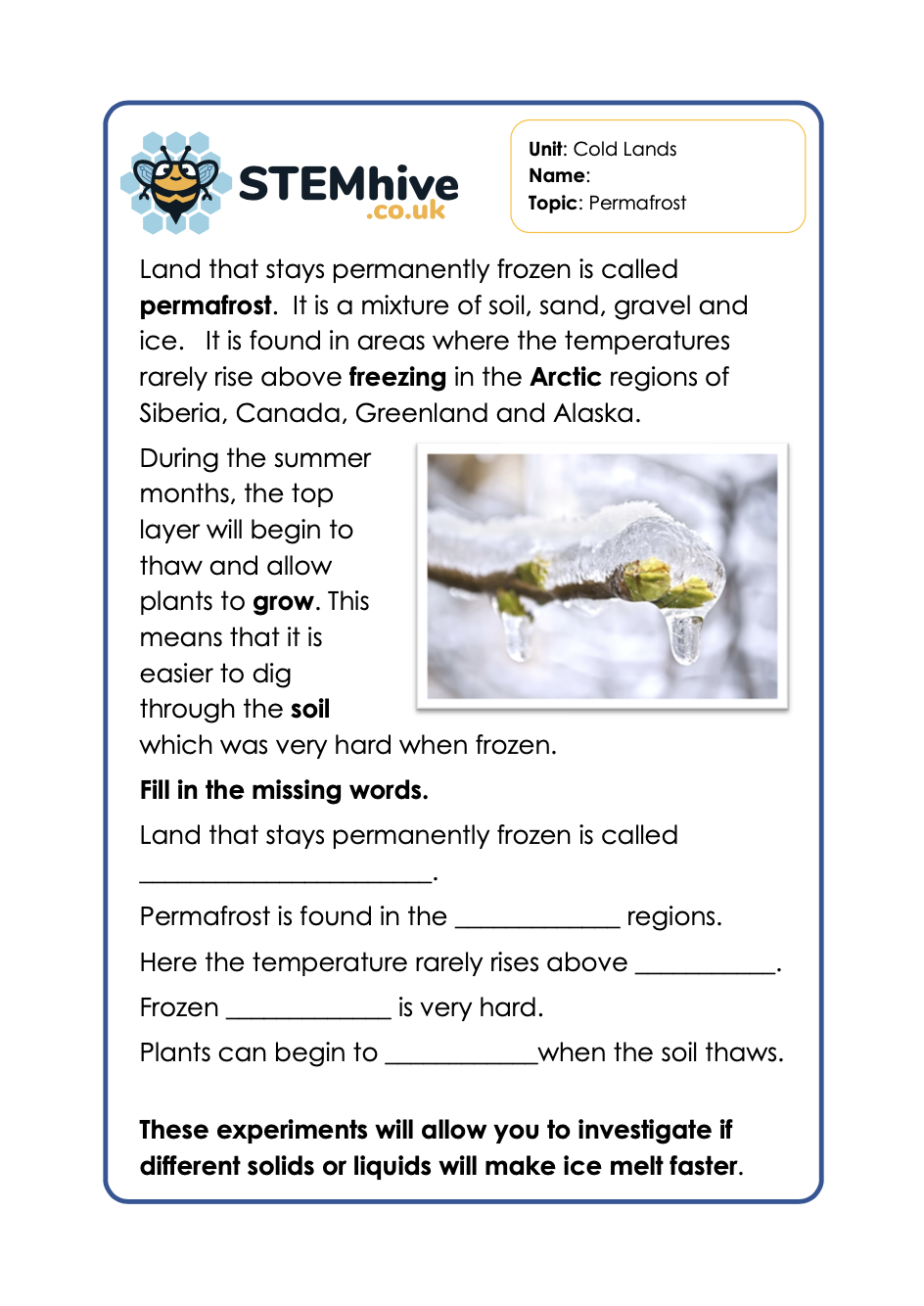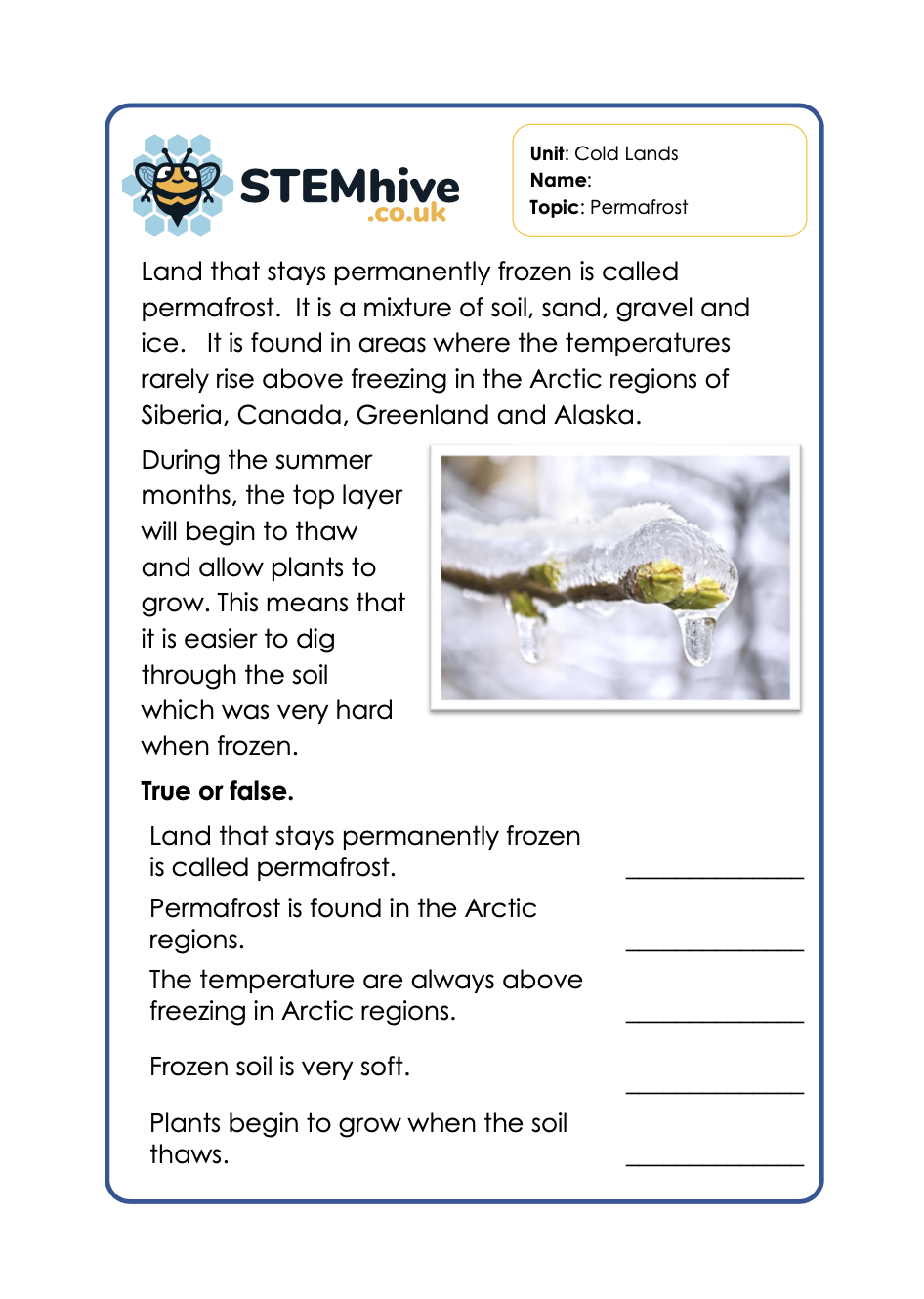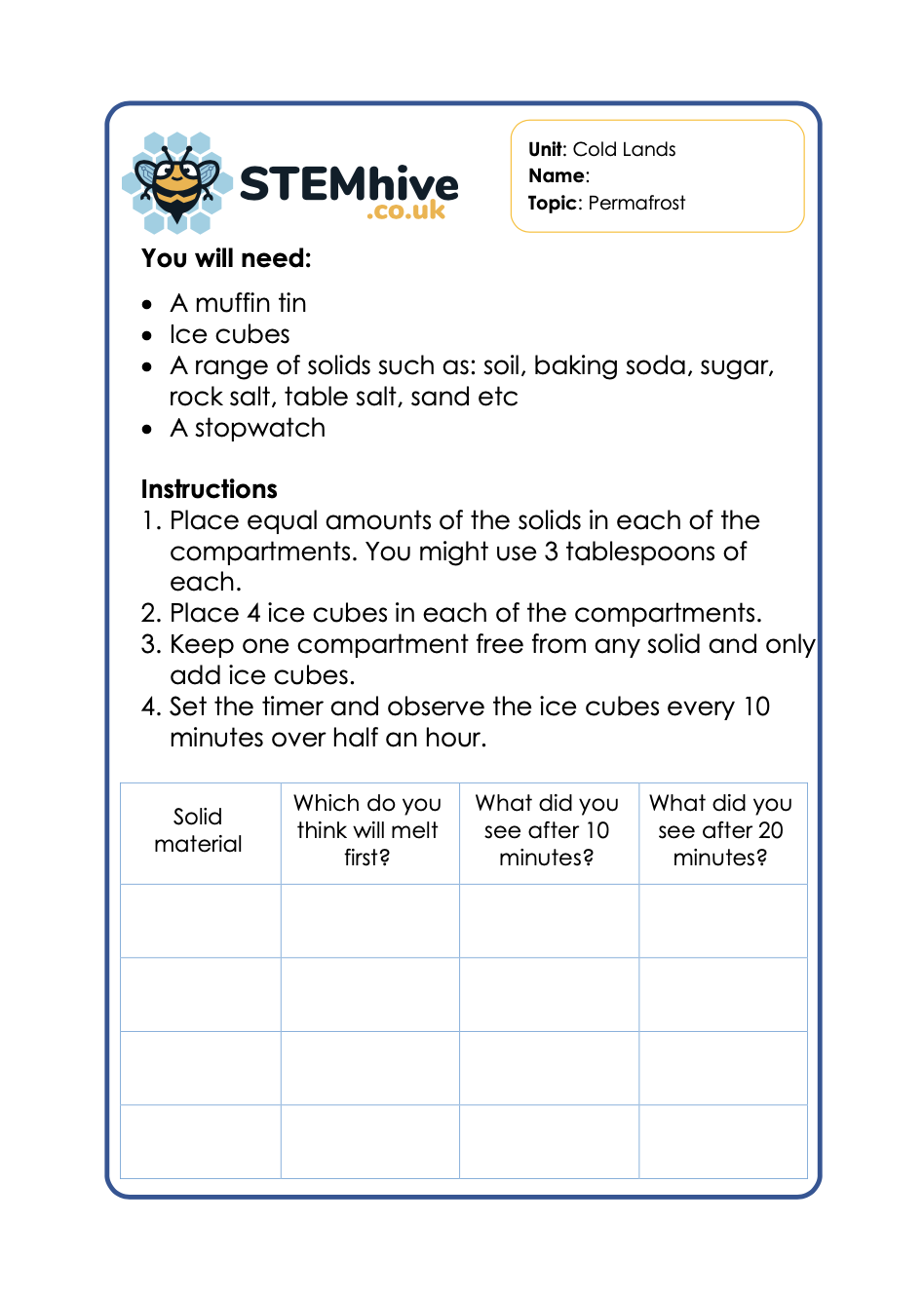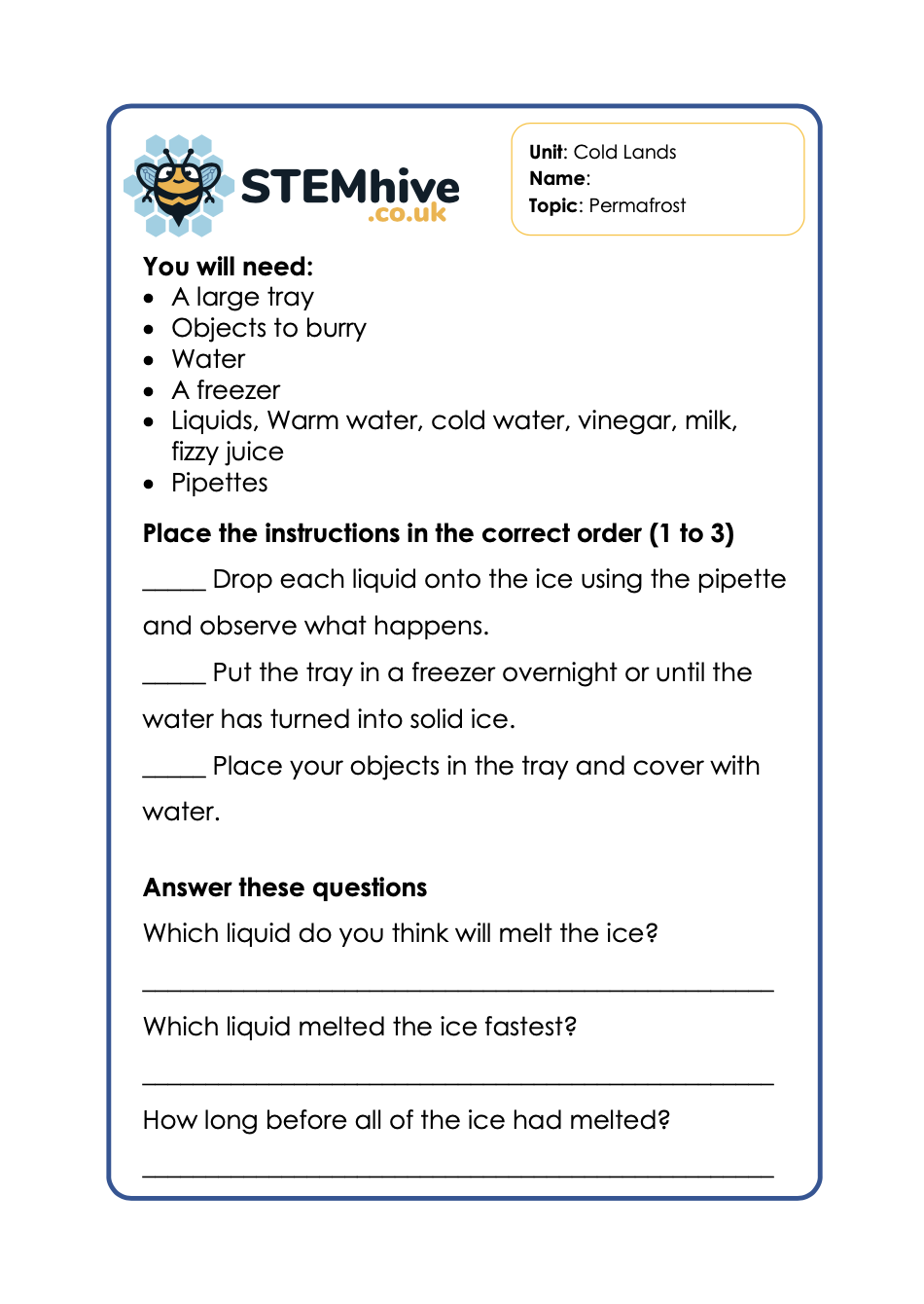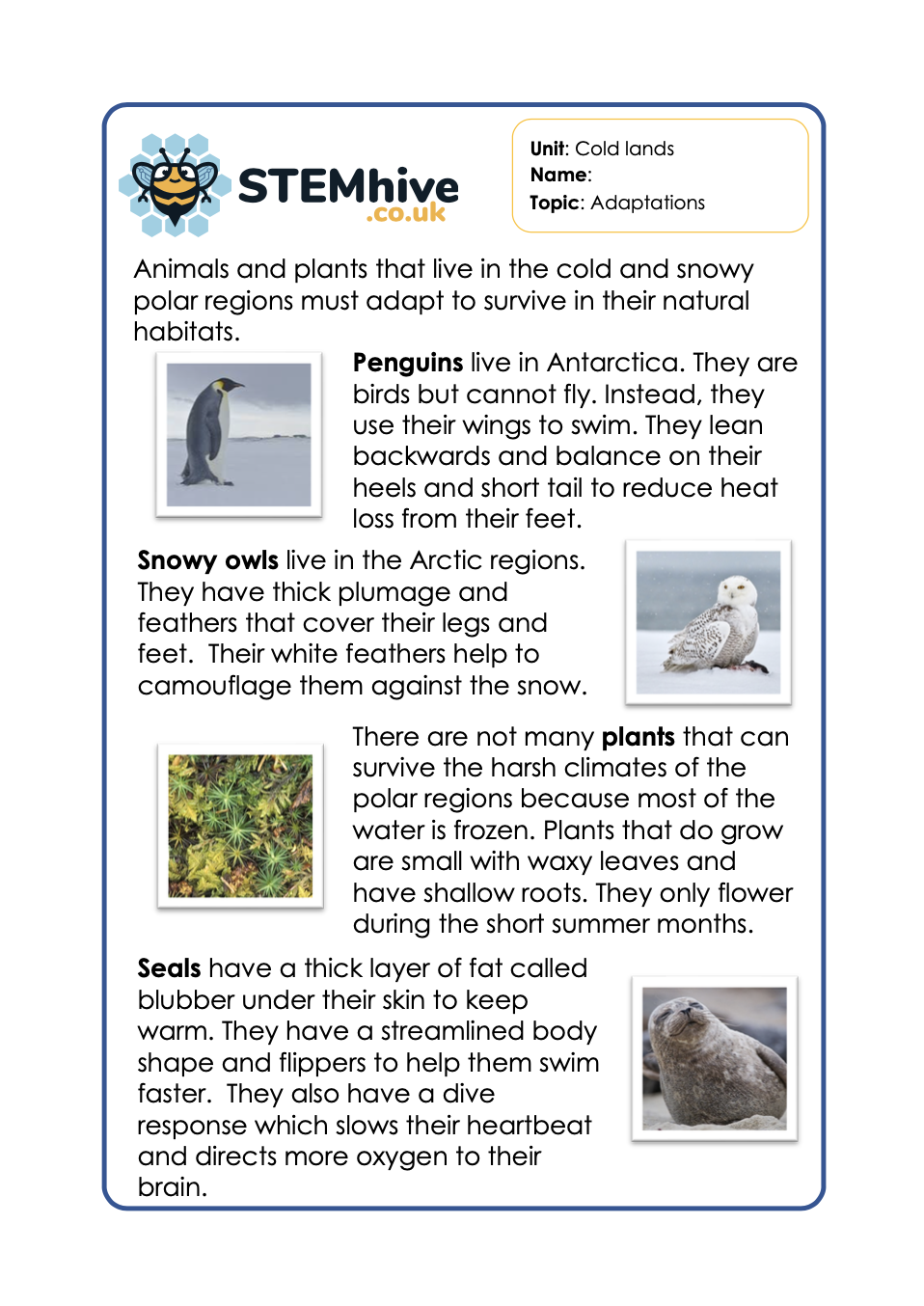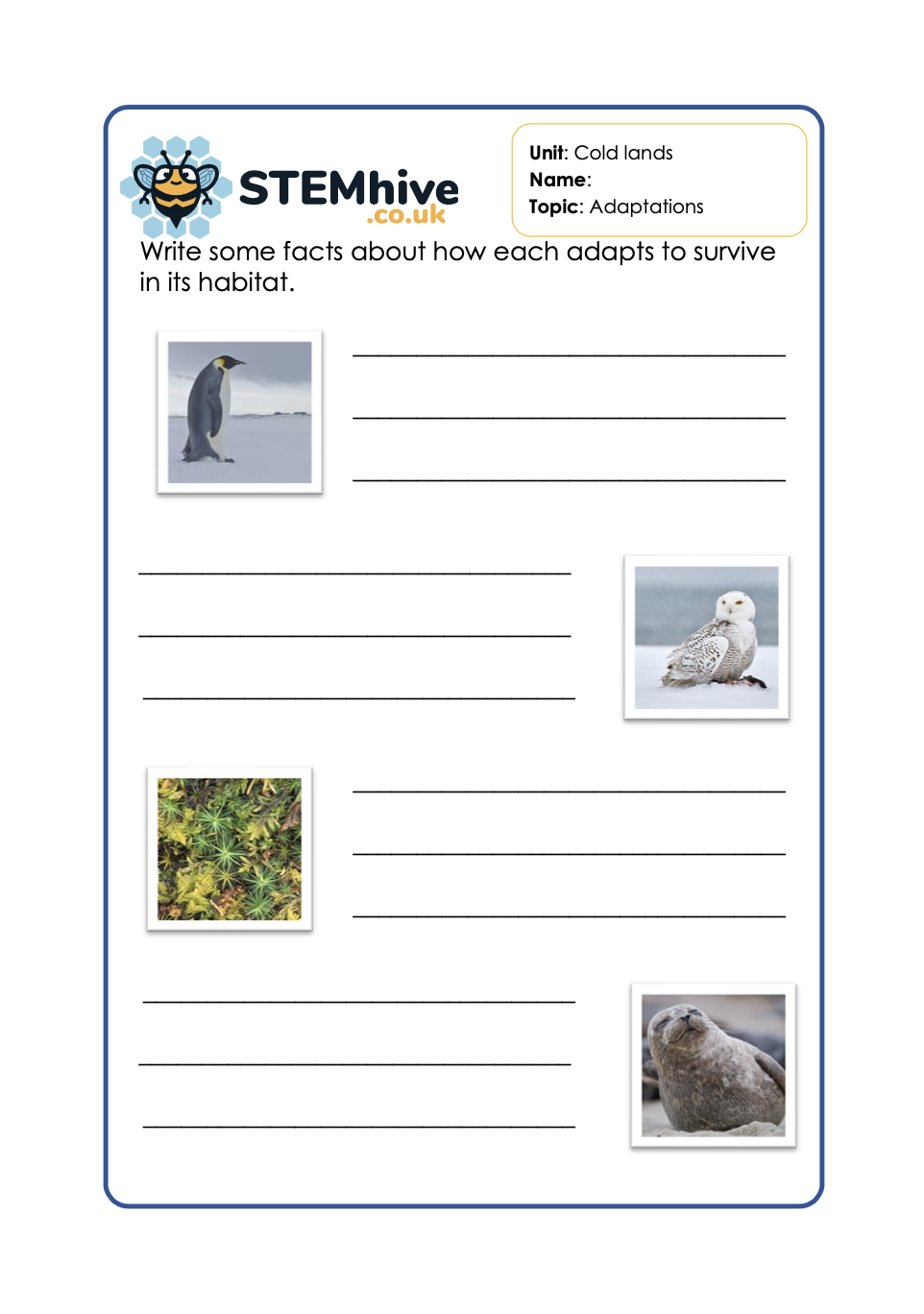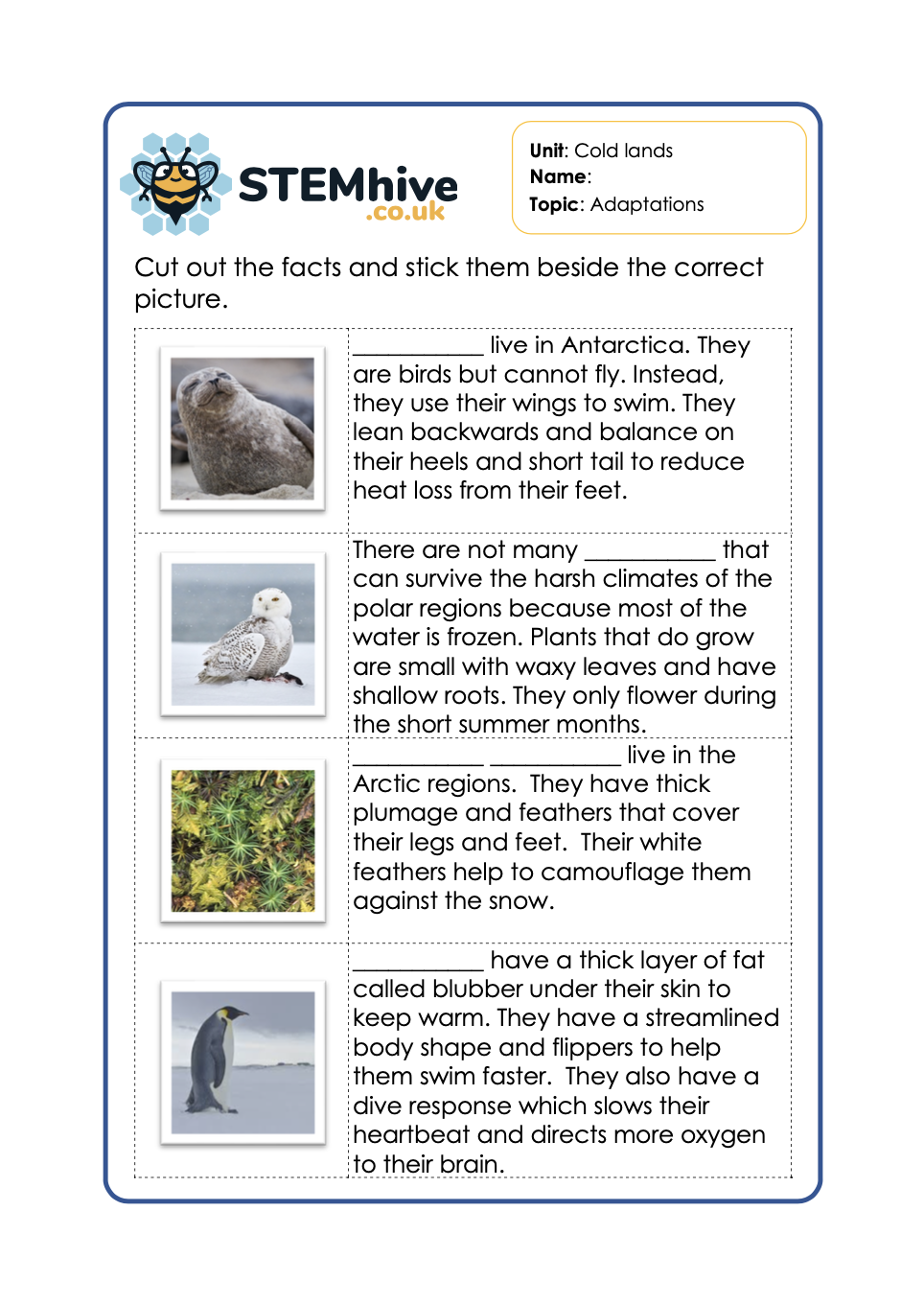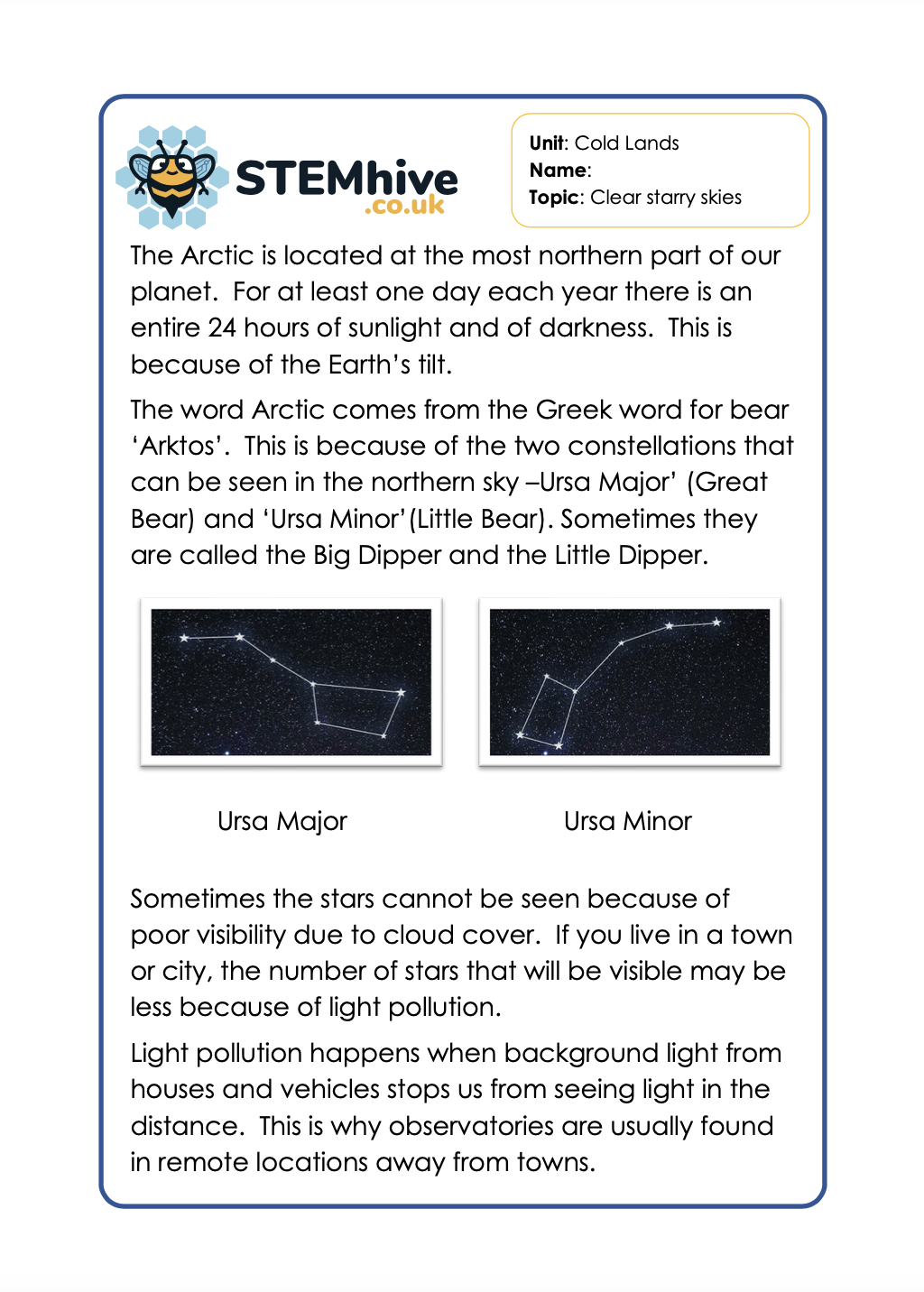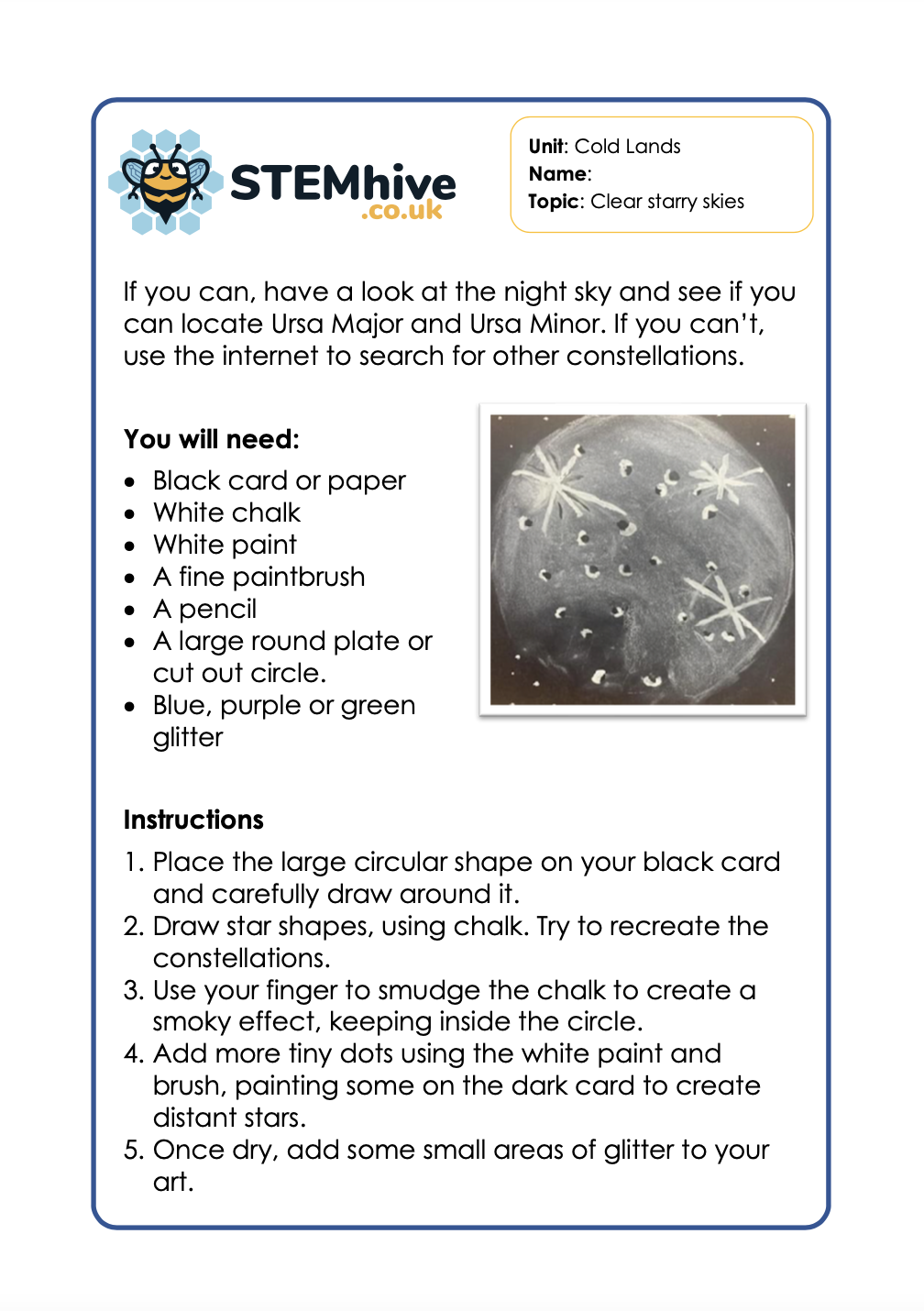Polar Regions
Main Focus: Penguins
In Antarctica, Emperor penguins huddle together to protect themselves against cold and windy conditions. They also have a thick layer of blubber or fat. This lets the penguins share heat and conserve energy when food is scarce.
In this science experiment, your KS1 class will recognise how fat can keep your body warmer in colder temperatures.
Unlock ResourceMain Focus: Igloos
An igloo is also known as a “snow house”. It is a shelter made from blocks of hard-packed snow and usually is in the shape of a dome.
Igloos are mostly identified with the Innuit people of Canada’s Artic but can also be found in Greenland. Even when the temperature is -40 oC outdoors, the inside of an igloo can warm up to 0 oC. This is because the thick walls block the wind and the snow and ice traps body heat inside.
This is a great learning activity for your class which is finished off with a great STEM construction challenge of building an igloo with large and small marshmallows. Your class will follow the instructions carefully for their construction challenge.
Main Focus: Freezing Water
Water can be a liquid, a gas or a solid. When it is at room temperature it is a liquid.
When it is a liquid, the
particles are able to
move around and move
to take on the shape of
the container that it is in. When you heat water, the particles are able to escape into the air.
To make ice art you will need:
- Acollectionofnatural objects (leaves, twigs, flowers, shells)
- Colouredplastic wrappers and glitter
- Large plastic moulds (plastic lids work well)
- Water
- Heavy cord or string
- A freezer if the temperatures are not freezing outdoors overnight
Main Focus: Keeping Warm
Animals such as polar bears and beluga whales keep warm because they have layers of blubber to insulate their bodies.
Some animals like Arctic wolves and reindeer also grow a thick winter coat to protect their bodies from the cold.
Humans use clothes to keep themselves warm. Explorers have to wear lots of layers to keep their bodies warm and protected from freezing weather conditions.
In this Science experiment your KS1 class will investigate which material is the best insulator to keep a human warm. To do this, they will try to keep a mug of hot liquid warm!
Main Focus: Melting Ice Caps
When you take ice-cream out of the freezer it begins to melt. This is because the air temperature is warmer than in the freezer and causes the ice-cream to change from a solid to a liquid.
The same thing happens in nature. When the temperature begins to warm, ice begins to melt.
Scientists tell us that the ice caps are melting. Ice caps are thick layers of snow and ice found at the North and South Poles. They are sometimes called glaciers.
Ice sheets are very large areas of glacial ice. The largest ice sheet is in Antarctica.
Your class will answer the questions based on the information in this resource, and it has been differentiated to cater for KS1 classes.
Main Focus: Permafrost
These experiments will allow you to investigate if different solids or liquids will make ice melt faster.
Land that stays permanently frozen is called permafrost. It is a mixture of soil, sand, gravel and ice. It is found in areas where the temperatures rarely rise above freezing in the Arctic regions of Siberia, Canada, Greenland and Alaska.
Main Focus: Adaptations
This is a great resource when covering a topic on cold regions that highlights how animals and plants have adapted in order to survive in the harshest of environments. Your class will learn how penguins, seals and snow owls reduce heat loss.
Your class will read the information and create their own fact sheet based on the information they have learned.
We have also included a quick and simple resource that encourages your class to read the information and match it to a picture.
Unlock ResourceMain Focus: Starry Skies
The Arctic is located at the most northern part of our planet. For at least one day each year there is an entire 24 hours of sunlight and of darkness. This is because of the Earth’s tilt.
The word Arctic comes from the Greek word for bear ‘Arktos’. This is because of the two constellations that can be seen in the northern sky –Ursa Major’ (Great Bear) and ‘Ursa Minor’(Little Bear). Sometimes they are called the Big Dipper and the Little Dipper.
This STEM activity involves your class creating their own constellation artwork.

